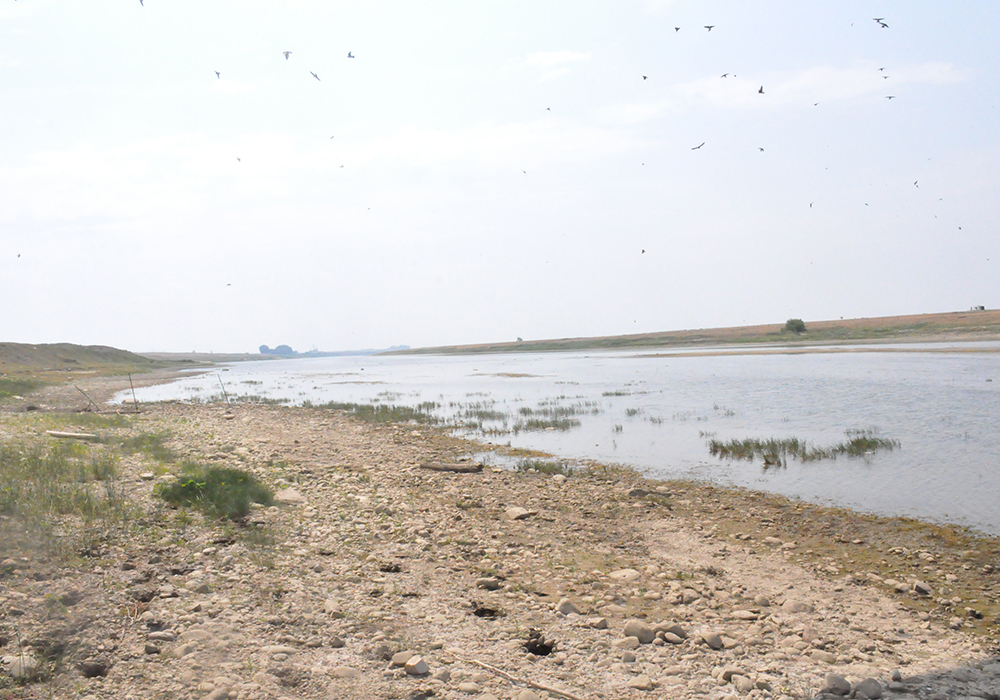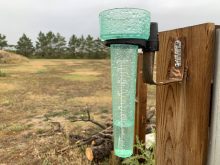Cooler temperatures and precipitation may offer relief, but river levels have been running below historical lows this year
The irrigation season in Alberta is ending, just as Calgary issues mandatory water restrictions and the province elevates its water shortage rating.
“This is a dry year and demands on water are more evident,” said Ryan Davison, chair of the South East Alberta Watershed Alliance (SEAWA). “It may be time to re-think future development such as irrigation expansion to understand what some of the future impacts may be.”
Alberta is elevating its water shortage rating to Stage 4 of its five-level conservation and management system as municipalities and irrigation districts are stressing the need not to waste any of the resource because of the conditions along the South Saskatchewan basin.
Read Also

Europe holds promise for Canadian lentils
Pulse Canada is trying to help boost lentil consumption in Europe, which is already the fourth largest market.
Stage 4 reflects that a “significant number” of water licensees along the Bow, Oldman and South Saskatchewan rivers are being affected because of the inability to divert water with shortages either projected or are currently expected to persist.
Calgary started restrictions on outdoor household use of water while the Western Irrigation District has begun drawing down Chestermere Lake to fulfill its statutory obligations.
Lethbridge has suspended washing of city vehicles, reduced watering parks and are asking residents to conserve water to avoid mandatory restrictions. The Lethbridge Northern Irrigation District (LNID) notified users that Alberta Agriculture is reducing flows into its main canal.
The Oldman Dam is at 43 percent of its storage capacity and, if dry conditions persist, that’s expected to fall to 10 percent by the end of the irrigation season, according to the LNID. The Keho Reservoir is at 92 percent of its full supply level.
The St. Mary’s River, Bow River and eastern irrigation districts are all stressing water conservation to help maintain reservoir levels for next year and river health.
Medicine Hat is not undertaking any water conservation measures but is monitoring the situation. They note river levels were lower during the 2001 drought and no water restrictions were put in place then.
But the downstream effect has seen the issued raised to SEAWA, said Davison, based in Medicine Hat, as the South Saskatchewan River levels drop below the water conservation objective set by the province.
Hydrological charts also show that river levels are barely hitting in-stream objectives to ensure Alberta meets its flow obligations for water passing into Saskatchewan.
Davison said despite the situation, the city’s water supply is not at risk at the current levels. “But there is a point where it could be a problem for them to draw water.”
Cooler temperatures and precipitation that hit southern Alberta in mid-August may be enough to stretch out the irrigation season but it’s been a prolonged situation this year with river levels running below historical low averages since June.
“It seems were at minimum flows a lot earlier this year than in the past years, and it seemed we didn’t see much high water from spring runoff,” said Davison.
That’s a refrain which has been shared by many along the river this year as irrigation districts and watershed planning and advisory councils have noted the low mountain snowpack melted early and quickly this year.
Growing upstream demands will see downstream effects continue in dry years, said Davison.
One proposal that hasn’t been picked up following the 2006 moratorium on issuing new water licences on the river was to see 10 percent of allocations returned to the river when licences were transferred.
“I was always hopeful that would make a difference, but it doesn’t seem to be helping that much,” said Davison.
Mike Murray, executive director of the Bow River Basin Council, said at the time of the moratorium being put in place, the idea was this would create a market for existing water licences and that 10 percent holdback would be put in place during transfers.
Murray said people can sometimes get hung up on the estimated 70 percent of water allocations, which irrigation districts hold in water licences on the Bow River, noting they don’t use that amount of water.
“But even in 2006 — it’s written right into the documents — they expected those allocations would be used more over time and especially in times like we’re having right now,” he said. “That’s what the 10 percent hold back was trying to help with. Over time, we’d be putting more water back in the river so that while we’d be using more of that allocation, more would be held back within the river.”
Murray said that during a recent inter-basin meeting on the situation, this year is being recognized as the most challenging since 2001.
The province is currently in the middle of a $1 billion expansion of irrigation infrastructure in southern Alberta, while also examining the possibility of building a new irrigation system on the Red Deer River near the confluence of the South Saskatchewan River.
Saskatchewan is also in the middle of planning for a major irrigation expansion, which will also draw heavily from the South Saskatchewan River at Lake Diefenbaker.
















